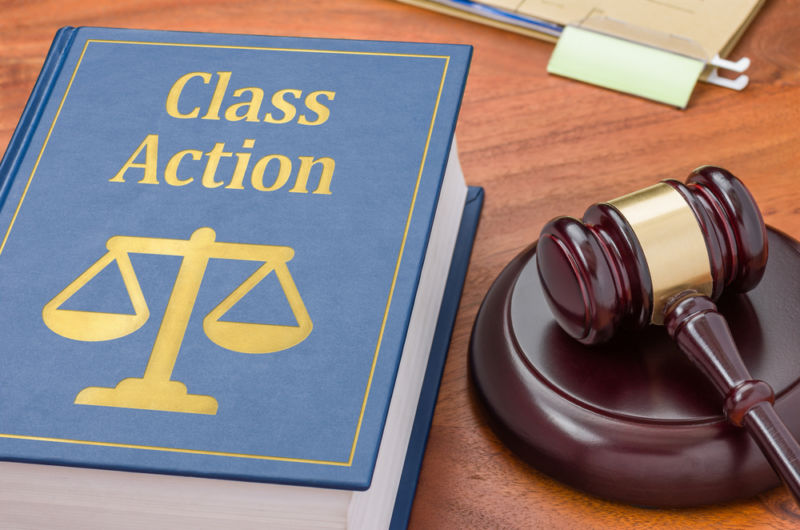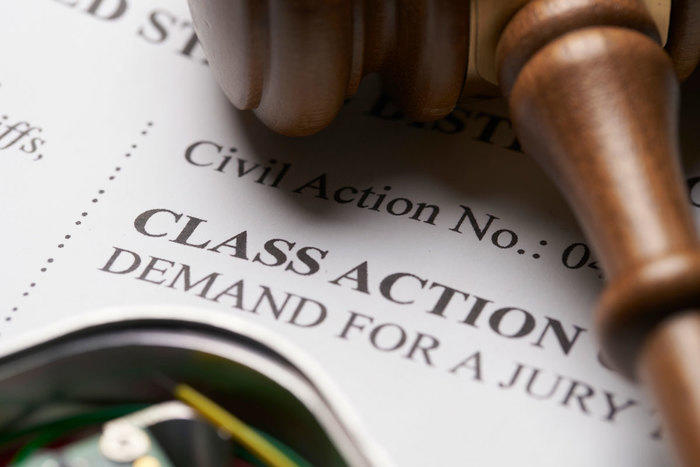Strength in Numbers: Exploring the Impact of Class Action Lawsuits
Wiki Article
Understanding Course Action Suit: A Guide for Lawyers
Class activity claims have actually come to be an integral part of the lawful landscape, enabling the loan consolidation of several insurance claims right into a single action. For lawyers, recognizing the ins and outs of course activity lawsuits is critical in efficiently representing their clients. This thorough guide discovers the fundamentals of class action suits, from recognizing possible class members to browsing the qualification process. Additionally, it looks into crucial approaches for managing course activity litigation and offers understandings into discussing and getting approval for negotiations. By diving into the ins and outs of course action lawsuits, this overview equips lawyers with the expertise and tools needed to effectively navigate this complex area of regulation.The Fundamentals of Class Activity Legal Actions
Class activity suits are a lawful device utilized to settle comparable cases from a group of individuals into a solitary legal action, providing a effective and cost-effective strategy to looking for justice and resolution. This kind of lawsuit allows a depictive complainant, acting on part of the entire course, to bring a claim against a defendant that has apparently created damage or went against the legal rights of multiple people.The fundamental needs for bringing a course activity lawsuit consist of numerosity, commonness, typicality, and competence of representation. Numerosity refers to the fact that the course should be so big that joinder of all participants would be impractical.
Course activity claims can be helpful for both defendants and complainants. For accuseds, it offers the possibility to effectively solve numerous cases in a single lawsuit, preventing the need to defend against countless individual legal actions.
Identifying and Assessing Prospective Class Members
After developing the standard demands for a course activity legal action, the next step is to determine and analyze possible course participants. This procedure includes identifying who may be component of the course and evaluating their claims to determine if they satisfy the essential standards.To determine potential class participants, attorneys commonly perform substantial research and gather appropriate details. This might involve assessing records, conducting meetings, and examining records to identify individuals or entities that might have been impacted by the supposed wrongdoing. It is crucial to develop a detailed and clear listing of prospective class members to ensure that all influenced celebrations are consisted of in the lawsuit.
Once potential course members have actually been determined, the next action is to analyze their claims. This includes assessing the merits of each individual claim to establish if they meet the legal demands for course accreditation. Attorneys need to very carefully assess the realities, evidence, and legal theories of each potential class member's case to ensure that they have a practical instance.
Examining potential course members also includes figuring out whether they fulfill the course interpretation and have actually endured similar injury as a result of the accused's actions. This calls for contrasting the facts and conditions of each prospective class participant's scenario to the allegations and legal theories placed forth in the claim.
Browsing the Course Accreditation Refine
To efficiently browse the course qualification procedure, attorneys have to carefully abide by the procedural requirements stated by the court. Class accreditation is an important action in a class action lawsuit, as it figures out whether a situation can continue as a course action, standing for a team of individuals who have comparable insurance claims against a defendant. The procedure entails pleasing certain requirements, such as numerosity, commonality, typicality, and competence of representation.First of all, attorneys should develop numerosity by showing that the course is so huge that specific joinder is unwise. This calls for a thorough analysis of the insurance claims and defenses entailed.
Next, legal representatives have to reveal typicality, which indicates that the depictive complainant's insurance claims are regular of the cases of the course participants. This makes certain that the rate of interests of the representative complainant line up with the passions of the course. Attorneys must demonstrate adequacy of representation, implying that the depictive complainant and their advice will rather and effectively stand for the passions of the class.
To navigate this procedure successfully, legal representatives must thoroughly prepare by conducting considerable study, gathering evidence, and establishing a compelling debate that pleases each of these criteria. They need to also be prepared to reply to any type of objections or difficulties elevated by the accused. By faithfully adhering to the procedural needs set forth by the court, legal representatives can enhance their chances of getting class accreditation and progressing the rate of interests of the course members.

Key Techniques for Taking Care Of Class Activity Litigation
Upon effectively navigating the course certification procedure, lawyers must after that execute crucial techniques for efficiently taking care of course activity litigation. These techniques are important to make sure that the case continues smoothly and effectively, ultimately making the most of the opportunities of a desirable result for the class participants.
One key method is to develop a solid and natural lawful team (Class action lawsuit). This entails constructing a team of lawyers with knowledge in course action litigation, as well as various other relevant areas such as the specific sector or subject issue associated with the instance. helpful site A versatile group can bring various point of views and skills to the table, improving the total efficiency of the lawsuits
An additional vital approach is to establish a well-balanced and detailed litigation strategy. This plan should detail the overall goals of the instance, as well as the details lawful concepts and debates that will certainly be pursued. It should additionally include a timeline and budget to make sure that the case remains on track and within the assigned resources.
Additionally, lawyers need to actively involve with the class members throughout the litigation process (Class action lawsuit). This includes offering regular updates on the progress of the case, seeking input and feedback from the course members, and attending to any kind of worries or inquiries they might have. By this website promoting open communication and partnership, lawyers can develop trust fund and support amongst the course members, which can be critical in accomplishing a successful resolution
Clearing Up Course Activity Legal Actions: Arrangement and Approval
When it involves settling course action lawsuits, efficient settlement and acquiring authorization are important action in attaining a resolution. Class activity legal actions are intricate and entail a multitude of plaintiffs, making it essential to get to a negotiation that is reasonable and adequate to all celebrations included.
Once a negotiation contract is reached, it has to be accepted by the court. The court's function in this procedure is to make certain that the negotiation is reasonable, reasonable, and properly protects the rate of interests of the course members. The court will consider elements such have a peek at this site as the nature of the claims, the toughness of the proof, the prospective healing for the course members, and any type of objections increased by class participants.
Obtaining court authorization is essential as it supplies finality to the negotiation and protects the rate of interests of the class members. It guarantees that the settlement is binding and enforceable, and course participants can obtain their rightful settlement.
Final Thought

Course action claims have actually become an integral part of the legal landscape, allowing for the combination of several cases into a solitary action. Course accreditation is an important step in a class action suit, as it figures out whether an instance can continue as a course action, standing for a group of individuals who have similar insurance claims against an offender. By carefully adhering to the procedural requirements set forth by the court, lawyers can increase their chances of getting course accreditation and progressing the rate of interests of the course members.
The court will think about aspects such as the nature of the cases, the strength of the proof, the possible recuperation for the course members, and any kind of objections increased by class participants.
By determining and examining possible class members, legal representatives can identify the viability of a course action suit.
Report this wiki page